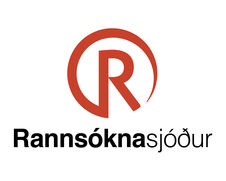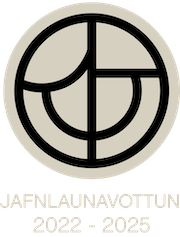Bergfræðilegur arkitektúr kvikukerfisins undir Öræfajökli - verkefni lokið
Fréttatilkynning verkefnisstjóra
The results of this study provide valuable insights into the magma plumbing system and magma evolution dynamics of Öræfajökull volcano. These findings can be applied in future research to better understand volcanic behavior, assess volcanic hazards, and interpret pre-eruption unrest signals.
Öræfajökull is an ice-covered, intraplate central volcano in southeast Iceland and has had two historical eruptions: (i) a catastrophic explosive eruption in 1362 CE, and (ii) an effusive flank eruption in 1727 CE. Both eruptions had a significant impact on the local population via tephra fall and jökulhlaups (i.e., lahars), including PDCs (pyroclastic density currents) in the 1362 event, which is also the largest explosive eruption in Europe since Mt. Vesuvius in 79 CE. After 289 years of dormancy, Öræfajökull showed signs of unrest in 2016-2018, resulting from magma injection into the volcano's plumbing system, which may indicate that the volcano is preparing for an eruption. Little is known about how Öræfajökull volcano prepares for an eruption or the nature of its plumbing system, which is essential knowledge for interpreting pre-eruption unrest signals.
In this study, the focus has been on constructing the plumbing system that fed peripheral basalt eruptions around the Öræfajökull volcano and, here, exemplified by the basaltic promontory Ingólfshöfði ~20 km south of Öræfajökull volcano. The magma that produced Ingólfshöfði rose directly through the crust and thus bypassed the complex plumbing of the main volcanic edifice. The observed chemical compositions and textures of crystals in the lava from Ingólfshöfði show two distinct generations of plagioclase, clinopyroxene and olivine crystals that indicate at least two mush-like magma storage levels were present below Ingólfshöfði at the time of its formation. Pressure and temperature calculations using thermobarometric equations with clinopyroxene compositions indicate that the lower storage zone is located at ~7.5-11 km depth (i.e., in the range of ~300-400 Mpa), and the upper storage zone is located at ~1-3 km depth (i.e., ~50- 150 Mpa). Detailed crystallization experiments were additionally performed in internally heated pressure vessels (IHPV), using glass from Ingólfshöfði with different H2O/CO2 ratios at pressure between 50-400 Mpa (~1.5-12 km depth) and temperature of 850-1150°C in order to establish the relationships between the crystals and the magma, the evolution of their compositions at different conditions and to see the pre-eruptive and potential magma evolution condition of this magma. This type of research hasn’t been performed on the Öræfajökull volcano nor has experimental petrology been performed on any volcano or volcanic system in Iceland to this detailed extent.
Information on how the results will be applied:
The results of this study provide valuable insights into the magma plumbing system and magma
evolution dynamics of Öræfajökull volcano. These findings can be applied in future research to better understand volcanic behavior, assess volcanic hazards, and interpret pre-eruption unrest signals. Additionally, the experimental petrology techniques developed in this study can be utilized in further investigations of other volcanic systems, contributing to advancements in volcanic research and hazard mitigation strategies. Furthermore, when Öræfajökull erupts, the phase relationships, temperature, and pressure based on the eruptive material will provide critical data for interpreting the volcanic processes involved.
A list of the project’s outputs:
The research has been introduced at two large geological conferences. The first at the American
Geophysical Union (AGU) held in San Francisco in December 2022. The second one at the 36th Nordic Geological Winter Meeting held in Gothenburg in January 2024. Four research papers will be submitted in 2024 in ESPL. The PhD thesis in total will be open at Skemman.is, a repository of academic and research documents for universities in Iceland.
Heiti verkefnis: Bergfræðilegur
arkítektúr kvikukerfisins undir Öræfajökli/The petrological architecture of the
plumbing system below Oraefajokull volcano, Iceland
Verkefnisstjóri: Helga Kristín Torfadóttir, Háskóla Íslands
Tegund styrks: Doktorsnemastyrkur
Styrktímabil: 2021-2022
Fjárhæð styrks kr. 13.140.000
Tilvísunarnúmer Rannís: 218034


